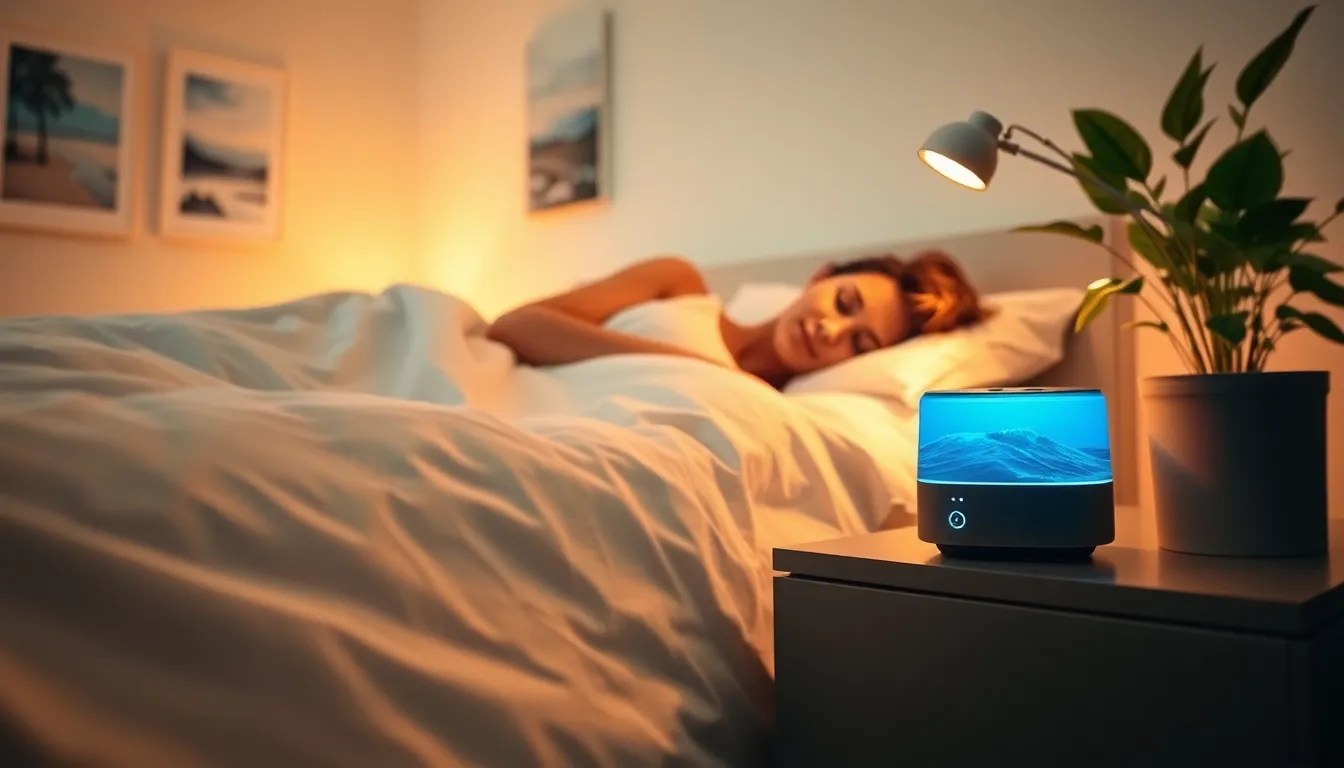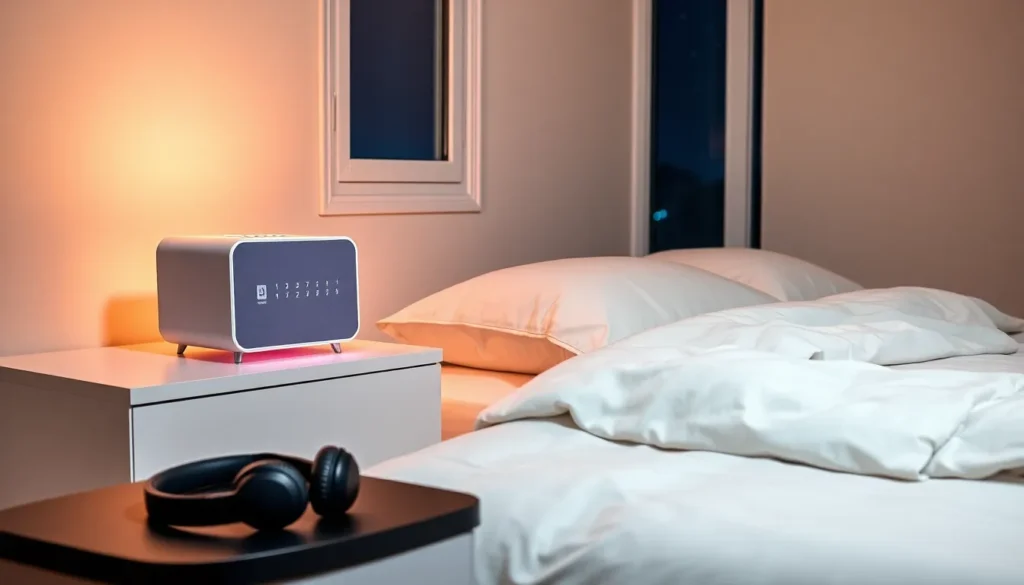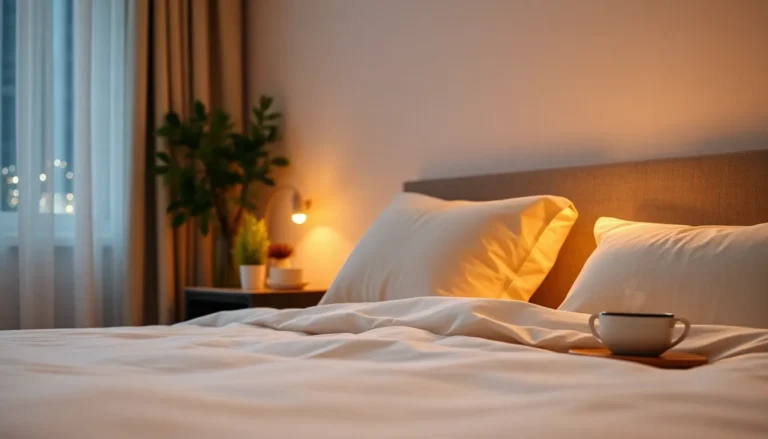When counting sheep just isn’t cutting it, many people turn to soothing sounds to drift off into dreamland. It might sound like a simple trick, but finding the right sound can turn an insomniac into a snoozer faster than you can say, “goodnight.” So, whether it’s the gentle patter of rain or the soft hum of a lullaby, let’s discover the realm of sleep sounds that might just help you catch some z’s instantly. Get comfy: it’s time to tune in and turn off.
Table of Contents
ToggleThe Science Behind Sleep Sounds

Sleep is essential for both mental and physical health. Research indicates that certain sounds can enhance sleep quality by masking disruptive noises and creating a calming atmosphere. Our brainwaves respond to sound stimuli, integrating them into our relaxation mechanisms.
For instance, white noise generates a consistent sound barrier that can drown out distractions, while natural soundscapes like ocean waves or forest ambiance have been shown to lower heart rates and reduce stress. It’s fascinating how something as simple as sound can lead to deeper, more restorative sleep.
Popular Sounds for Instant Relaxation
Let’s jump into the wide array of sounds that people gravitate toward for instant relaxation. Some of the most popular options include:
White Noise
This classic option is like the unsung hero of sleep sounds. It’s consistent and often used by parents to help their babies sleep. The steady hum creates a sound blanket that muffles other noises, making it easier to drift off.
Nature Sounds
Imagine lying in bed while listening to the gentle trickle of a stream or the rustle of leaves in the wind. Nature sounds tap into our innate connection with the outdoors, which can lead to a calming atmosphere.
Lullabies
There’s something timeless and comforting about lullabies. They evoke nostalgia and can transport listeners to a simpler time, filled with warmth and care.
ASMR (Autonomous Sensory Meridian Response)
For some, ASMR content, characterized by soft whispers, light tapping, and various gentle sounds, can elicit tingles that promote relaxation. It’s a unique experience that many find sleep-inducing.
How to Create Your Ideal Sleep Sound Environment
Creating the perfect sleep sound environment involves more than just picking a sound. Consider the following elements:
Acoustic Setup
A high-quality speaker or headphones can make all the difference. The right speakers will bring out the nuances in the sounds, nudging you closer to that precious sleep state.
Volume Control
Keeping the volume at a moderate level is crucial. Too loud, and it becomes a distraction: too soft, and it fades into the background, leaving you restless.
Personal Preference
Everyone’s taste is unique. Experiment with various sounds to see what resonates best with you. Some might love the rhythmic pitter-patter of rain, while others may prefer the wild crackle of a campfire.
Guided Sleep Meditations and Stories
Charismatic voices guiding you through a peaceful meditation can be an excellent option for those who enjoy a narrative. Guided sleep meditations often combine soothing soundscapes with tranquil storytelling.
The Benefits
These meditations not only help distract the mind from racing thoughts but also promote mindfulness. As a result, listeners can let go of tension and embark on retreats of calmness.
Popular Options
Many platforms offer a variety of guided meditations specifically designed for sleep. From dreamy journeys to enchanting tales, the options are endless. Some apps even offer customizable meditations, allowing users to select their preferred sounds and narrative styles.
Technology and Apps for Sleep Sounds
In this digital age, technology offers plenty of support for those seeking better sleep. A plethora of apps and gadgets are available to help create the ideal auditory experience.
Apps
Several apps offer libraries filled with sleep sounds, meditations, and white noise options. Popular choices include Calm, Headspace, and Sleep Cycle. Many even provide bedtime stories designed to assist listeners in winding down.
Gadgets
From white noise machines to smart speakers, technology can enhance the sleep experience. Devices like the Hatch Restore let users create personalized sleep routines, combining sounds, lights, and alarms.
Tips for Overcoming Sleep Disturbances
Even with the best sounds, some individuals struggle with sleep disturbances. Here are some handy tips that may help:
Establish a Routine
Going to sleep and waking at the same time daily helps regulate the body’s internal clock, significantly enhancing sleep quality.
Limit Screen Time
Reducing blue light exposure from screens before bed can prevent disruption to the circadian rhythm, aiding in a smoother transition to sleep.
Create a Sleep Sanctuary
Making one’s bedroom conducive to sleep can have profound effects. Elevate your environment by minimizing clutter, adjusting the temperature, and blocking disruptive light.



